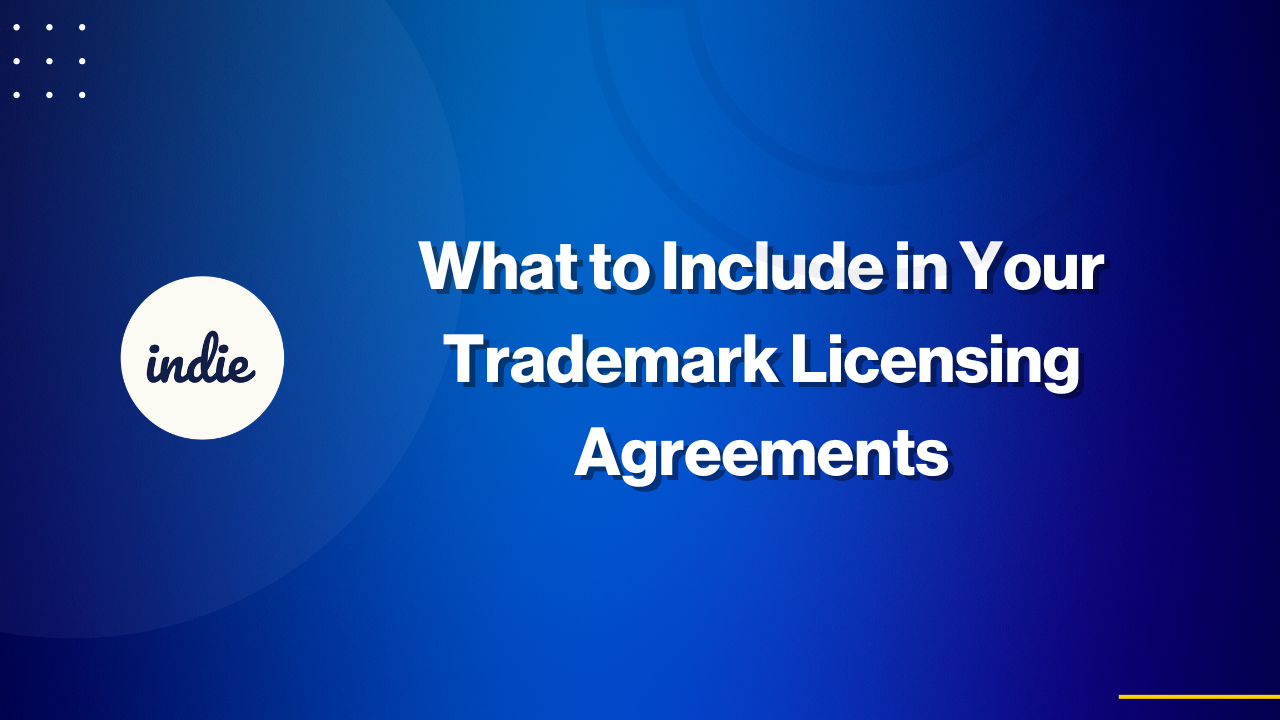Here’s a plain-English guide to what you should include in every trademark licensing agreement to protect your business.
What Is a Trademark Licensing Agreement?
A trademark licensing agreement is a legal contract where the trademark owner (licensor) gives another person or company (licensee) permission to use the trademark. This could be a logo, brand name, or slogan used on products, in advertising, or across services.
Why It Matters
Without a clear agreement, you risk:
- Trademark misuse
- Loss of brand value
- Confusing your customers
- Weakening or losing your legal rights
1. Names and Roles of the Parties
Start with the basics. Clearly list:
- Who owns the trademark (licensor)
- Who’s getting permission to use it (licensee)
- Legal names and addresses
Make sure both parties are authorized to enter into the contract.
2. Description of the Trademark
Be specific about what’s being licensed. Include:
- Trademark name
- Logo designs
- Registration numbers (if registered)
- Any taglines or visual elements
Attach visual examples or copies of the registration certificates as exhibits to the contract.
3. Scope of the License
Define how and where the trademark can be used. This prevents misunderstandings and protects your brand.
Include Details Like:
- Territory: U.S.-only, global, or specific regions
- Industries/Products: Can they use it on clothing, digital content, food products, etc.?
- Exclusivity: Is it an exclusive license or can you give others the same rights?
Example: “Licensee may use the XYZ® logo solely on yoga apparel in the United States.”
4. Term and Renewal
State how long the agreement lasts and what happens when it ends.
Cover:
- Start and end dates
- Renewal options (automatic or by request)
- Termination terms (for breach or convenience)
Most licenses run for 1–5 years, with an option to renew.
5. Quality Control Standards
To keep your trademark strong, you must control how others use it. This is legally required under U.S. trademark law.
Include:
- Product quality standards
- Brand guidelines (colors, fonts, logo use)
- Approval process for new materials
- Right to inspect or audit use
Legal Tip: Without quality control, your trademark rights could be considered “abandoned.”
6. Payment Terms and Royalties
Licensing your trademark usually means you’ll be paid. Clearly explain how and when you’ll be compensated.
Consider:
- Flat fees vs. royalty percentage (e.g., 5–10% of sales)
- Payment schedule (monthly, quarterly)
- Minimum sales requirements
- Late fees or interest on unpaid amounts
Keep records of all payments and sales reports.
7. Infringement Handling
Decide who will deal with trademark infringement if it happens.
Cover:
- Who monitors for infringement
- Who can sue infringers
- How legal costs are handled
- Whether the licensee must report potential violations
This helps both parties stay aligned on protecting the trademark.
8. Termination and Consequences
Sometimes licensing relationships go bad. You need a clear exit strategy.
Include:
- Grounds for termination (e.g., breach of contract, bankruptcy)
- What happens to unsold goods
- Rights to recall or destroy branded materials
- Post-termination transition period (e.g., 30 days to sell off stock)
Pro Tip: Include a clause that requires the licensee to stop all use of your trademark immediately upon termination.
9. Ownership of the Trademark
Make it crystal clear that the licensor owns the trademark and that the licensee doesn’t get any ownership rights.
Example Clause:
“Licensee acknowledges that Licensor retains all ownership rights to the trademark, and nothing in this Agreement shall be construed to transfer any ownership interest.”
10. Dispute Resolution
Add a section about how disputes will be handled. This can help avoid expensive court battles.
Options:
- Mediation or arbitration
- Jurisdiction (which state’s laws apply)
- Venue (where legal disputes will be handled)
11. Signature and Date
Finally, both parties should sign and date the agreement. Consider adding spaces for:
- Witnesses or notaries
- Company officers’ names and titles
- Digital signatures (if using e-sign platforms like DocuSign)
Bonus Tip: Register the Agreement (When Needed)
In some situations—especially with international trademarks or major business deals—you may want to record the license agreement with the USPTO. This can help clarify ownership and rights to third parties.
Final Thoughts
A trademark licensing agreement isn’t just about getting paid—it’s about protecting your brand. Every detail matters. From where the mark is used to how it’s displayed, your agreement needs to be clear, specific, and legally strong.
Don’t leave your brand’s future to chance. Get your agreement in writing—and get it right.

